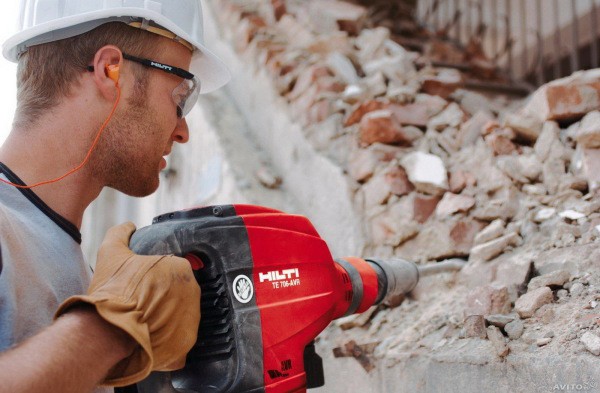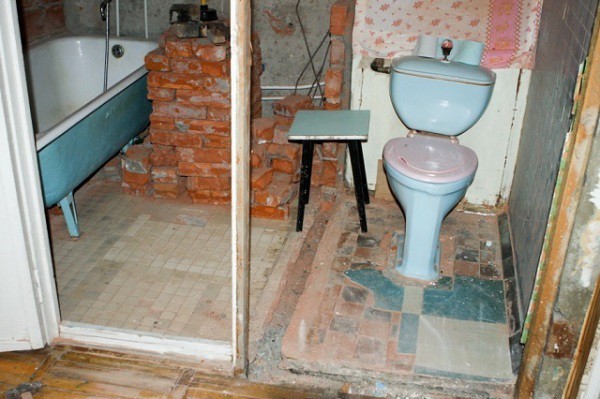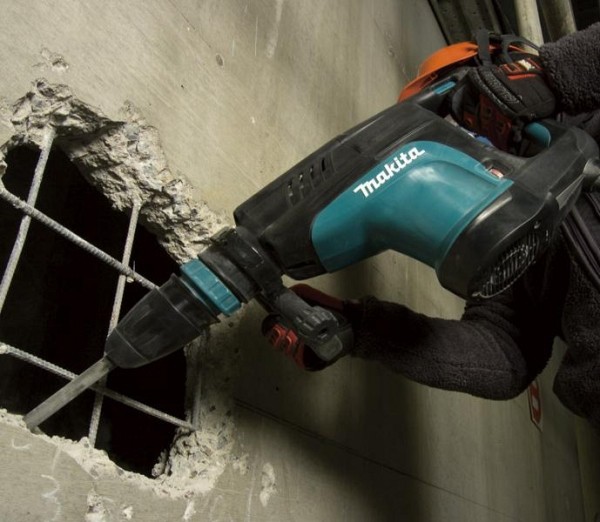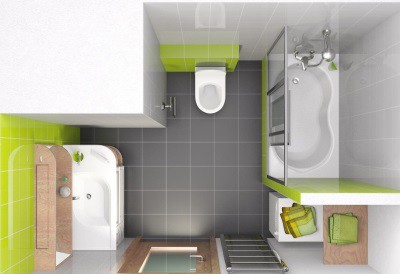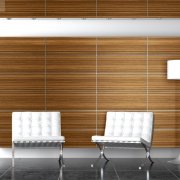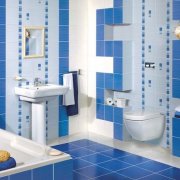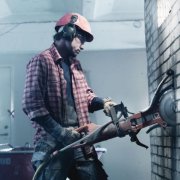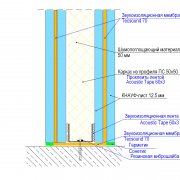How to tear down the wall between the bathroom and the toilet in accordance with all the rules
Tear down the wall between the bathroom and the toilet is possible only after obtaining permission to carry out these works in the relevant authorities. This may be urban architecture, BTI, housing inspection, which depends on the region. It is also necessary to find out whether this partition plays the role of a bearing wall, although this is very rare in practice.
How to perform the demolition of the wall between the bathroom and the toilet, the article will tell.
The content of the article
Wall demolition features
When deciding to change the layout of the bathroom, combine the toilet and bathroom in one room, you will need special technical solutions that are agreed with the relevant organizations.
It could be:
- Sketch or simplified version. Such permission can be obtained in the following cases:
- performing a simple demolition of the wall between the toilet and the bathroom without increasing the total area at the expense of other premises;
- rearrangement of plumbing fixtures: bathtubs, toilet bowl or sink, without increasing their number.
Tip: When planning the transfer from one wall to another, this can be agreed on the sketch, and for the installation of additional equipment: a bidet, a shower, a full plan should be provided.
- Project or full plan. This is necessary when:
- increase the size of the bathroom, using the area of other rooms, such as: a corridor or pantry, but not kitchens;
- installation of additional plumbing, they can be: shower tray or cabin, bidet or additional sink.
Tip: When removing the wall between the toilet and the bathroom, it should be noted that it is strictly forbidden to reduce or change the forms of communication and ventilation ducts.
After obtaining permission to demolish the wall in the bathroom and everything is agreed, you can carry out the demolition of the wall.
The advantages of this process are:
- More efficient use of the area: the total area of the premises can be up to 5.5 m².
- The places where the bath, sink and toilet were installed will become additional space for the washing machine, and even a small cabinet to the ceiling. In addition, there will be free space for unimpeded movement in the bathroom.
- Better room ventilation. In many houses, to save money, ventilation is done only in one of the rooms: in the toilet or in the bathroom, and an additional ventilation hole is made between the rooms, which does not always provide the necessary functions.
Tip: To improve it, you should first clean the ventilation ducts, then there will be no more problems with ventilation when combining the bathroom.
- Very often, a room can be planned in such a way that it will be almost square. And such a layout allows you to easily and conveniently arrange it (see Ideas for decorating the bathroom: what to choose for yourself) Equipment and furniture are placed along the walls, and in the center there will be quite a lot of space for free movement.
Particulars of demolition of partitions in apartment buildings
Despite the fact that in the panel 9-storey houses there is an uncomfortable layout of the bathroom, but here the demolition of the wall in the bathroom allows, albeit a little, to expand the space. This is due to the fact that the designated area for bathrooms in such buildings is rather narrow rectangles.
The wall between the two rooms is a reinforced plaster panel, the width of which is up to 12 centimeters.Demolition of the wall between the bathroom and the toilet can be done quickly enough, the gypsum breaks well with an ordinary sledgehammer, and the existing wire frame is simply cut off by a grinder.
In buildings of the 50s and earlier, partitions between the toilet and the bathroom were:
- Masonry made of stone on clay mortar.
- Made of wood with plastered shingles.
Such constructions are demolished with their own hands for a long and difficult time, special care is necessary here, due to their dilapidation.
For instance:
- During the demolition, you must constantly pay attention to the ceiling so that its coating does not fall off, this can happen at any time.
- When dismantling a wall from the area where it adjoins the floor, accuracy is also needed - in many such houses there are no concrete floors, but only wooden ones are installed, which are due to long use in emergency condition, and the repair process can provoke the process of their destruction.
- In the "German houses", built in the 50s, as temporary housing, but a little better than the barracks existing at that time, it is definitely impossible to answer the question whether the wall in the bathroom can be demolished. This will be one big difficulty. In this case, the bathroom, most often already combined, but the owners want to increase its area. You can only do this:
- due to the small area at the entrance, and the toilet continues into the main corridor;
- stealing 0.5 square meters from the kitchen.
The panels have the appearance of a wooden structure, which is plastered with shingles. They break quickly, but there is a lot of dust.
Tip: Due to the dilapidation of the building, everything must be done very carefully so as not to fall to the lower floor or to "catch" part of the ceiling on your head.
How to prepare for the demolition of the wall
Before demolishing the wall between the bathroom and the toilet, preparatory work is carried out.
The necessary tools and materials are purchased:
- For hammering the walls, a high-power punch.
- A grinder with special discs for cutting concrete walls and cutting reinforcement.
- Sledgehammer, preferably heavier, and a hammer
- Nail clipper.
- Chisel or chisel.
- Thick plastic wrap or oilcloth.
- Cotton rags or cloth.
- Protective equipment: closed clothing and shoes, goggles, a respirator and gloves.
Further it is necessary:
- Because of the big noise and roar that accompanies the work, it is necessary to warn the neighbors about upcoming operations, especially if they have small children. Perhaps they can go on a visit or go for a walk.
- It is advisable to dismantle the toilet bowl, bathtub, faucet and sink, and then take them out to another room, which will save expensive plumbing from splintered walls.
Tip: If this is difficult to do, all items should be covered with soft things, such as old coats, and put a polyethylene film or oilcloth on top to protect from dust.
- Cover the floor in order to preserve the coating from chips and cracks on it and make it easier to clean the building during construction waste removal.
- Block the water, which will protect the room from the flood, in case of unforeseen damage to the pipes from the falling fragment of the wall.
- When fixing on the partition of the heated towel rail, it must be carefully dismantled, and the entire wiring of communications will need to be redone.
- The electrical wiring on this wall must be de-energized and then removed.
- On all available doorways, cotton cloths well moistened with water are broadcast. This will prevent dust from entering other rooms.
- Wet rags carefully close all the cracks that are between the floor and the doors.
- In the toilet and the bathroom, basins and buckets of water are placed, it will attract dust to itself.
How to tear down the wall between the toilet and the bathroom
For the manufacture of partitions could be used:
- Concrete.
- Brick, white or red.
- Plaster blocks.
- Wood.
The most common material is brick, which is often used to build a partition between the toilet and the bathroom.
Instructions for the work is as follows:
- Tile is carefully removed or plastic panelswhen planning their reuse.
- Above the upper row of the existing masonry, a chisel or chisel is driven in between the ceiling and the wall.
- The bricks are loosened slightly and removed.
- If there is a ventilation hole in the wall, dismantling begins with it.
- A large nail puller, used as a lever, is driven into the masonry slots, and then all rows of bricks are carefully cleaned to the floor.
With this technology of wall demolition, a lot of dust does not occur, work is done with minimal noise, and most of the bricks remain intact, which allows them to be used in the future. Although the price of the work is not too high, including the cost of the brick, but it will take a lot of time.
To speed up the process of dismantling any wall, you can use a puncher, as in the photo, on which a chisel or sledgehammer is mounted, but at the same time there will be a lot of noise and dust, and all bricks will become debris.
In the manufacture of plaster walls:
- Cuttings are made along the perimeter of the wall and broken by a sledgehammer.
- The metal fittings inserted inside the wall are cut off by a grinder.
- After removing the wall between the toilet and the bathroom, the skirting boards are removed, which serve as the foundation for the box of gypsum boards. Typically, concrete and reinforcing elements are taken for their manufacture, which requires the use of a powerful hammer drill and grinder to remove them.
If the partition is made of concrete, which is extremely rare, for its demolition you will need a grinder with a special disk for concrete.
Then:
- Small pieces of the wall are cut along predefined lines.
- Each of them is taken out sequentially.
The grinder can be replaced with a conventional hammer drill or drill designed for impact work.
Wherein:
- Drill holes that are snug against each other over similarly framed pieces of the wall.
- Tapping lightly along the holes with a hammer, break out the resulting fragments from the partition.
In the presence of a powerful professional punch, with a special chisel mounted on it, the wall can be broken in a few single strokes. This is a fairly quick, but also the most noisy method, less accurate and quite unsafe.
- After the demolition of the wall between the toilet and the bathroom, garbage is removed.
Tip: You can’t remove construction debris in containers that are installed near each high-rise building.
Whole bricks are reused or sold cheaply, and the remains of plaster and fragments of concrete or gypsum walls must be disposed of in a landfill, and special permission must be obtained. The desire of the owner: I want to tear down the wall in the toilet and bath, it’s not so simple to fulfill. Therefore, before you begin to perform work, you need to consider all the nuances of its implementation.
